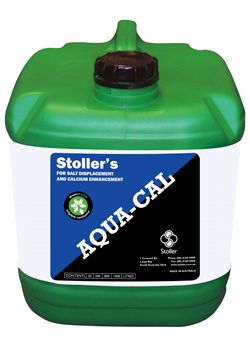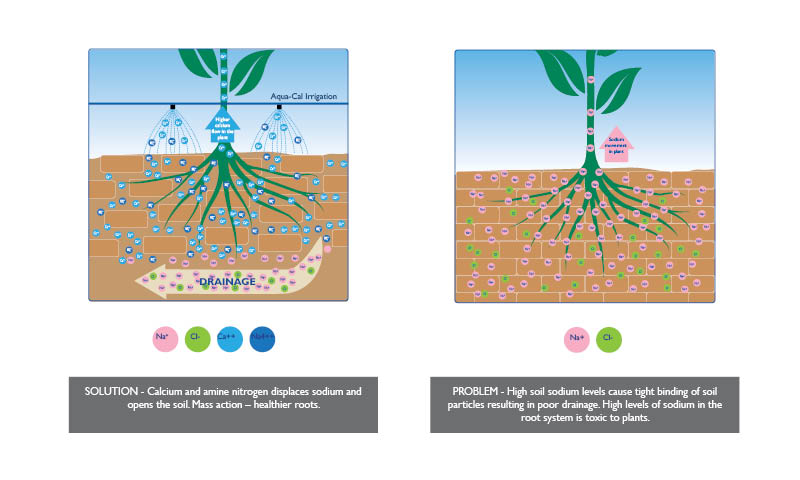
How Aqua-Cal works
A unique soil treatment that is effective in opening soils and releasing salts from the soil structure. Aqua-Cal can reduce soil EC and works best where soil is able to drain in order to relocate sodium from the roots.
Salinity – the problem
Salinity is a measure of salts in soil or water. Sodium chloride (NaCl) is generally the salt that causes the most damage to plants and reduces yield.
Many Australian soils are naturally high in salt and agricultural practices, like land clearing, have increased salinity as well. When more water moves through the soil into the groundwater, the water table rises. Water is drawn up through the soil and evaporates, leaving more salt behind. Irrigation can also increase salinity by raising the water table and depositing salt directly in the topsoil. Many farmers irrigate with bore water, recycled water and river water which can be naturally saline and increase salinity in the root zone. High salt levels change the soil structure, reduce drainage and damage plants.
Salinity – the solution
Good salt management depends on a combination of different land management practices, including systems that combine annual and perennial plants with the best agronomic practices and crop rotations.
Aqua-Cal used with RootFeed can help manage salinity in the root zone. The calcium in Aqua-Cal takes the place of sodium in the soil, so it can then be leached beyond the root zone by rain or irrigation. High soil calcium levels help to protect against increasing salinity and improve soil structure – this leads to better root growth and yield. RootFeed also contains calcium as well as additional nutrients to support root growth and is ideal for longer term salt management and prevention.
